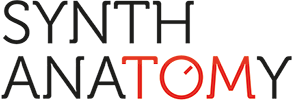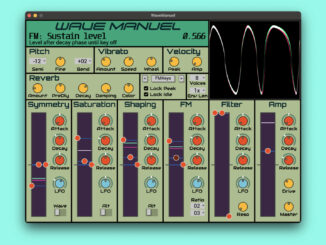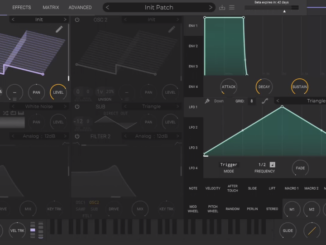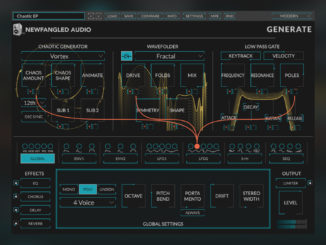Air TimewARP 2600 is an updated version of the popular Way Out Ware ARP 2600 Synthesizer emulation for macOS and Windows.
The ARP 2600 is a legendary semi-modular Synthesizer. There are hardware (Korg, Behringer) and software recreations (emulations) of this classic synth. Korg recently added a soft replica with more features to its Korg Collection 5.
Long before Korg or Cherry Audio, the developer Way Out Ware created the TimeARP 2600, an authentic emulation officially endorsed by the ARP Foundation. Unfortunately, the version was buggy for a long time. Now, AIR Music Tech has taken over the plugin from SoniVox (inMusic brand) and updated it.
Air TimewARP 2600
The TimewARP 2600 is back in a new, updated version. What is new in the Air compared to the Way Out Ware version is not disclosed in the press release or website. I think one of the differences is that it now has 8-voice polyphony. Correct me if I’m wrong.
Also new is the user interface, which has been completely redesigned. It now comes in classic grey, black + orange, and blue in the Blue Manie style.
Another cool feature of the new TimewARP 2600 is the ability to use it as an audio FX plugin. Users can craft new sounds or add unique effects, using the synthesizer to process inputs and create one-of-a-kind effects.
Endorsed by Alan R. Pearlman, the TimewARP 2600 accurately reproduces the sound of the original. Contributions from those who worked on the original hardware help ensure the authenticity of this plugin version.
Features
Like the original TimewARP 2600 plugin, it has three VCOs capable of generating audio and low-frequency (LFO) signals. There is also a noise generator (white to red), and ring modulation option.
Then, it has a lowpass resonant filter that supports variable-depth self-oscillation and audio band, and lowpass control modulation. Here is a difference to the Korg. The latter has two multimode filter instead of a single lowpass.
On the modulation side, it comes with the classic two envelope generators (ADSR, AR), an envelope follower, sample & hold, and an LFO (square, triangle, and sine waves). Also, there is a big difference to the Korg version, which has an auxiliary envelope and LFO.
It’s a pity that Air has not expanded the engine with more modulation options. Besides this, you have a 2-input VCA, multiple modules, and a stereo reverb. So, also, there is no multi-FX like in the new Korg version.
Other features are:
- Output Pan.
- Electronic Switch.
- Lag Processor – LF filtering from 1.2 to 1200Hz.
- 2 Inverter Modules – both with attenuable inputs.
- Preamp In – mono or stereo.
- Virtual ARP 3620 Keyboard.
- Variable-rate portamento, octave switch, pitch bend, LFO controls including delayed sine wave vibrato depth and speed.
- LFO Outputs – Including square, triangle, and sine waves.
- External LFO-In – Allows keyboard voltages to be modulated by any signal present on the TimewARP 2600.
- Interval Latch Switch – Will latch a two note interval for use as single key play.
- 2 Upper Voice Outputs.
- Multiple or Single Trigger Mode – Provides for single or multiple gates for slurred notes.
- Keyboard Repeat Mode – Provides auto repeat or repeat on key-press synchronized to keyboard LFO and MIDI Beat Clock.
- Square wave is syncable to MIDI Clock.
First Impression
It’s welcome to see that AIR has revived the TimewARP2600 in a new version. In terms of features, however, it is a bit disappointing compared to the new Korg ARP 2600 or the CA 2600 from Cherry Audio. Here they relied heavily on the original hardware. Nice that there is an affordable upgrade path for existing users.
Air TimewARP 2600 is available now for an introductory price of $49,99 instead of $99,99. Existing users of the original Way Out Ware TimeARP 2600 can be upgraded for $19,99. It runs as a VST, VST3, AU, and AAX plugin on macOS (native Apple Silicon + Intel) and Windows.
More information here: AIR Music Tech







*FYI, be prepared to create an ‘InMusic’ account in order to authorize the 10-day trial…best practice is to do that at the time of an actual purchase, no?:( That aside, it’s nice to have a simplified, more true to the original 2600 panel as a contrast to the (very good!) Korg and Cherry expanded 2600 offerings (we wish dearly that GForce had offered an ‘original’ mode in addition to their extra features on their otherwise excellent OB-1). IMO, while none truly capture a real 2600 (I prefer Korg the best in terms of clone tone and utility), the patch work here by industry veterans (great to see Rob Rich!) is excellent and will teach you a lot, if you study it…thanks to the team! Given all the ways to get these sounds, hard & soft, this revived TimewARP is well worth a look; it’s up to you, how many variations on this theme you want or need in your own personal toolkit.